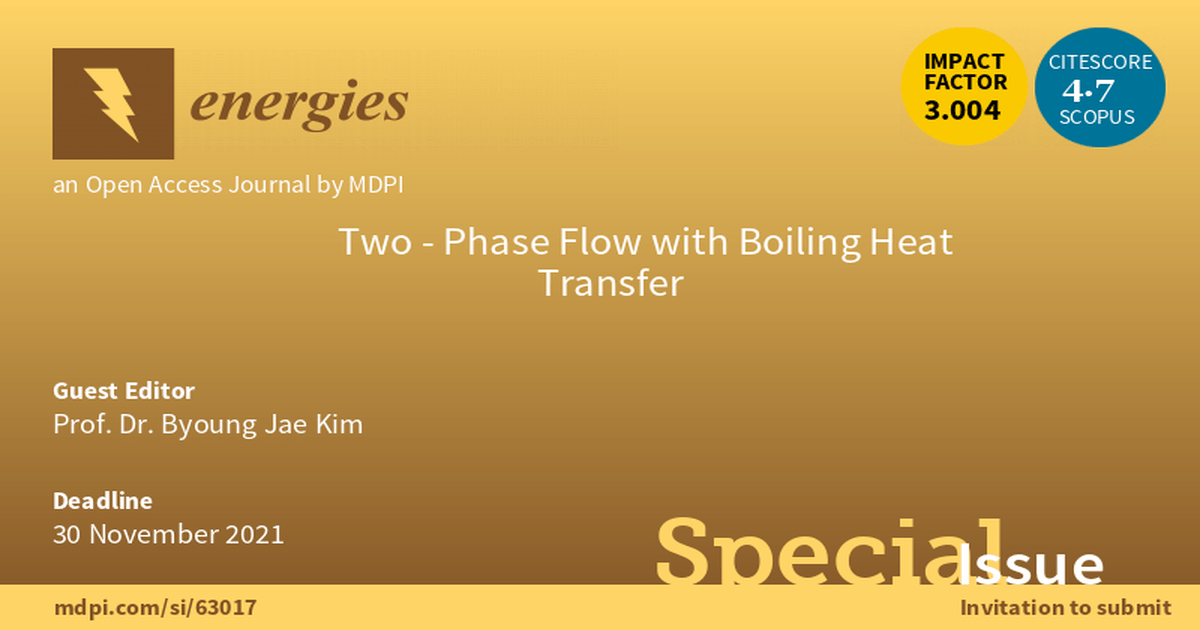Two-Phase Flow with Boiling Heat Transfer
A special issue of Energies (ISSN 1996-1073). This special issue belongs to the section "J1: Heat and Mass Transfer".
Deadline for manuscript submissions: closed (30 November 2021) | Viewed by 15387

Special Issue Editor
Special Issue Information
Dear Colleagues,
The Guest Editor cordially invites submissions to a Special Issue of Energies on the subject “Two-Phase Flow with Boiling Heat Transfer”. Boiling heat transfer has been widely used to provide efficient heat removal in energy systems with the help of latent heat exchange between liquid and vapor. Recently, various efforts have been made to understand the pool/flow boiling mechanism using advanced experimental and numerical techniques and to propose innovative methods to improve heat transfer efficiency in energy systems. This Special Issue will deal with recent research in the field of two-phase flow with boiling heat transfer. Topics of interest include, but are not limited to:
- Numerical modeling and simulation of boiling phenomena;
- Advanced measurement techniques of boiling phenomena;
- Pool boiling and bubble dynamics;
- Critical heat flux;
- Film boiling;
- Boiling in practical applications;
- Boiling enhancement techniques;
- Interfacial phenomena
Submit your paper and select the Journal “Energies” and the Special Issue “Two-Phase Flow with Boiling Heat Transfer” via: MDPI submission system. Please contact the special issue editor ([email protected]) for any queries. Our papers will be published on a rolling basis and we will be pleased to receive your submission once you have finished it.
Prof. Dr. Byoung Jae Kim
Guest Editor
Manuscript Submission Information
Manuscripts should be submitted online at www.mdpi.com by registering and logging in to this website. Once you are registered, click here to go to the submission form. Manuscripts can be submitted until the deadline. All submissions that pass pre-check are peer-reviewed. Accepted papers will be published continuously in the journal (as soon as accepted) and will be listed together on the special issue website. Research articles, review articles as well as short communications are invited. For planned papers, a title and short abstract (about 100 words) can be sent to the Editorial Office for announcement on this website.
Submitted manuscripts should not have been published previously, nor be under consideration for publication elsewhere (except conference proceedings papers). All manuscripts are thoroughly refereed through a single-blind peer-review process. A guide for authors and other relevant information for submission of manuscripts is available on the Instructions for Authors page. Energies is an international peer-reviewed open access semimonthly journal published by MDPI.
Please visit the Instructions for Authors page before submitting a manuscript. The Article Processing Charge (APC) for publication in this open access journal is 2600 CHF (Swiss Francs). Submitted papers should be well formatted and use good English. Authors may use MDPI's English editing service prior to publication or during author revisions.
Keywords
- Two-phase flow
- Boiling phenomena
- Two-phase flow measurement
- Two-phase flow simulation
- Two-phase flow modeling
- Boiling enhancement
- Energy system





